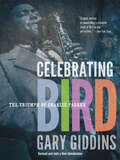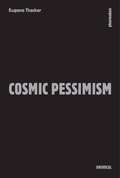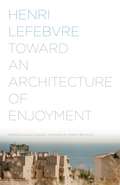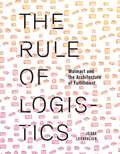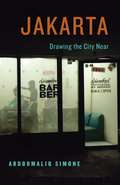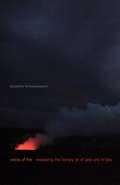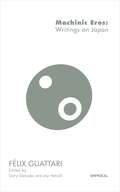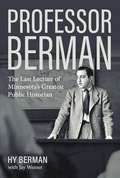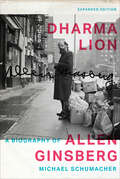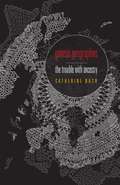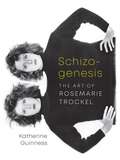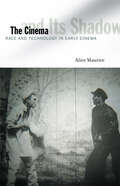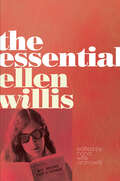- Table View
- List View
Celebrating Bird: The Triumph of Charlie Parker
by Gary GiddinsWithin days of Charlie &“Bird&” Parker&’s death at the age of thirty-four, a scrawled legend began appearing on walls around New York City: Bird Lives. Gone was one of the most outstanding jazz musicians of any era, the troubled genius who brought modernism to jazz and became a defining cultural force for musicians, writers, and artists of every stripe. Arguably the most significant musician in the country at the time of his death, Parker set the standard many musicians strove to reach—though he never enjoyed the same popular success that greeted many of his imitators. Today, the power of Parker&’s inventions resonates undiminished; and his influence continues to expand.Celebrating Bird is the groundbreaking and award-winning account of the life and legend of Charlie Parker from renowned biographer and critic Gary Giddins, whom Esquire called &“the best jazz writer in America today.&” Richly illustrated and drawing primarily from original sources, Giddins overturns many of the myths that have grown up around Parker. He cuts a fascinating portrait of the period, from Parker&’s apprentice days in the 1930s in his hometown of Kansas City to the often difficult years playing clubs in New York and Los Angeles, and reveals how Parker came to embody not only musical innovation and brilliance but the rage and exhilaration of an entire generation.Fully revised and with a new introduction by the author, Celebrating Bird is a classic of jazz writing that the Village Voice heralded as &“a celebration of the highest order&”—a portrayal of a jazz virtuoso whose gargantuan talent was haunted by his excesses and a view into the ravishing art of one of jazz&’s most commanding and remarkable figures.
Cosmic Pessimism (Univocal)
by Eugene Thacker&“We&’re doomed.&” So begins the work of the philosopher whose unabashed and aphoristic indictments of the human condition have been cropping up recently in popular culture. Today we find ourselves in an increasingly inhospitable world that is, at the same time, starkly indifferent to our species-specific hopes, desires, and disappointments. In the Anthropocene, pessimism is felt everywhere but rarely given its proper place. Though pessimism may be, as Eugene Thacker says, the lowest form of philosophy, it may also contain an enigma central to understanding the horizon of the human. Written in a series of fragments, aphorisms, and prose poems, Thacker&’s Cosmic Pessimism explores the varieties of pessimism and its often-conflicted relation to philosophy. &“Crying, laughing, sleeping—what other responses are adequate to a life that is so indifferent?&”
Playing With Fire: Feminist Thought And Activism Through Seven Lives In India
by Richa Nagar Sangtin WritersSeven voices contribute to this rare glimpse of the work being done on the front lines of the fight for social change in India. Playing with Fire is written in the collective voice of women employed by a large NGO as activists in their communities and is based on diaries, interviews, and conversations among them. Together their personal stories reveal larger themes and questions of sexism, casteism, and communalism, and a startling picture emerges of how NGOs both nourish and stifle local struggles for solidarity. The Hindi edition of the book, Sangtin Yatra, published in 2004, created controversy that resulted in backlash against the authors by their employer. The publication also drew support for the women and instigated a public conversation about the issues exposed in the book. Here, Richa Nagar addresses the dispute in the context of the politics of NGOs and feminist theory, articulating how development ideology employed by aid organizations serves to reinforce the domination of those it claims to help. The Sangtin Writers, Anupamlata, Ramsheela, Reshma Ansari, Richa Singh, Shashibala, Shashi Vaish, Surbala, and Vibha Bajpayee, are grassroots activists and members of a small organization called Sangtin in Uttar Pradesh, India. Richa Nagar teaches women’s studies at the University of Minnesota.
The Reorder of Things: The University and Its Pedagogies of Minority Difference (Difference Incorporated)
by Roderick A. FergusonIn the 1960s and 1970s, minority and women students at colleges and universities across the United States organized protest movements to end racial and gender inequality on campus. African American, Chicano, Asia American, American Indian, women, and queer activists demanded the creation of departments that reflected their histories and experiences, resulting in the formation of interdisciplinary studies programs that hoped to transform both the university and the wider society beyond the campus.In The Reorder of Things, however, Roderick A. Ferguson traces and assesses the ways in which the rise of interdisciplines—departments of race, gender, and ethnicity; fields such as queer studies—were not simply a challenge to contemporary power as manifest in academia, the state, and global capitalism but were, rather, constitutive of it. Ferguson delineates precisely how minority culture and difference as affirmed by legacies of the student movements were appropriated and institutionalized by established networks of power.Critically examining liberationist social movements and the cultural products that have been informed by them, including works by Adrian Piper, Toni Cade Bambara, Jhumpa Lahiri, and Zadie Smith, The Reorder of Things argues for the need to recognize the vulnerabilities of cultural studies to co-option by state power and to develop modes of debate and analysis that may be in the institution but are, unequivocally, not of it.
Toward an Architecture of Enjoyment
by Henri LefebvreToward an Architecture of Enjoyment is the first publication in any language of the only book devoted to architecture by Henri Lefebvre. Written in 1973 but only recently discovered in a private archive, this work extends Lefebvre&’s influential theory of urban space to the question of architecture. Taking the practices and perspective of habitation as his starting place, Lefebvre redefines architecture as a mode of imagination rather than a specialized process or a collection of monuments. He calls for an architecture of jouissance—of pleasure or enjoyment—centered on the body and its rhythms and based on the possibilities of the senses.Examining architectural examples from the Renaissance to the postwar period, Lefebvre investigates the bodily pleasures of moving in and around buildings and monuments, urban spaces, and gardens and landscapes. He argues that areas dedicated to enjoyment, sensuality, and desire are important sites for a society passing beyond industrial modernization. Lefebvre&’s theories on space and urbanization fundamentally reshaped the way we understand cities. Toward an Architecture of Enjoyment promises a similar impact on how we think about, and live within, architecture.
The Rule of Logistics: Walmart and the Architecture of Fulfillment
by Jesse LeCavalierEvery time you wheel a shopping cart through one of Walmart&’s more than 10,000 stores worldwide, or swipe your credit card or purchase something online, you enter a mind-boggling logistical regime. Even if you&’ve never shopped at Walmart, its logistics have probably affected your life. The Rule of Logistics makes sense of its spatial and architectural ramifications by analyzing the stores, distribution centers, databases, and inventory practices of the world&’s largest corporation.The Rule of Logistics tells the story of Walmart&’s buildings in the context of the corporation&’s entire operation, itself characterized by an obsession with logistics. Beginning with the company&’s founding in 1962, Jesse LeCavalier reveals how logistics—as a branch of knowledge, an area of work, and a collection of processes—takes shape and changes our built environment. Weaving together archival material with original drawings, LeCavalier shows how a diverse array of ideas, people, and things—military theory and chewing gum, Howard Dean and satellite networks, Hudson River School painters and real estate software, to name a few—are all connected through Walmart&’s logistical operations and in turn are transforming how its buildings are conceptualized, located, built, and inhabited.A major new contribution to architectural history and theory, The Rule of Logistics helps us understand how retailing today is changing our bodies, brains, buildings, and cities and predicts what future forms architecture might take when shaped by systems that exceed its current capacities.
Jakarta, Drawing the City Near
by AbdouMaliq SimoneJakarta, a city rife with disparities like many cities in the Global South, is undergoing rapid change. Alongside its megastructures, high-rise residential buildings, and franchised convenience stores, Jakarta&’s massive slums and off-hour street markets foster an unsettled urban population surviving in difficult conditions. But where does the vast middle of urban life fit into this dichotomy? In Jakarta, Drawing the City Near, AbdouMaliq Simone examines how people who the largest part of the population, such as the craftsmen, shopkeepers, and public servants, navigate and affect positive developments. In a city where people of diverse occupations operate in close proximity to each other, appearance can be very deceptive. Set in a place that on the surface seems remarkably dysfunctional, Simone guides readers through urban spaces and encounters, detailing households, institutions, markets, mosques, and schools. Over five years he engaged with residents from three different districts, and now he parses out the practices, politics, and economies that form present-day Jakarta while revealing how those who face uncertainty manage to improve their lives.Simone illustrates how the majority of Jakarta&’s population, caught between intense wealth and utter poverty, handle confluence and contradictions in their everyday lives. By exploring how inhabitants from different backgrounds regard each other, how they work together or keep their distance in order to make the city in which they reside endure, Jakarta, Drawing the City Near offers a powerful new way of thinking about urban life.
Voices of Fire: Reweaving the Literary Lei of Pele and Hi'iaka (First Peoples: New Directions in Indigenous Studies)
by ku'ualoha ho'omanawanuiStories of the volcano goddess Pele and her youngest sister Hi&‘iaka, patron of hula, are most familiar as a form of literary colonialism—first translated by missionary descendants and others, then co-opted by Hollywood and the tourist industry. But far from quaint tales for amusement, the Pele and Hi&‘iaka literature published between the 1860s and 1930 carried coded political meaning for the Hawaiian people at a time of great upheaval. Voices of Fire recovers the lost and often-suppressed significance of this literature, restoring it to its primary place in Hawaiian culture. Ku&‘ualoha ho&‘omanawanui takes up mo&‘olelo (histories, stories, narratives), mele (poetry, songs), oli (chants), and hula (dances) as they were conveyed by dozens of authors over a tumultuous sixty-eight-year period characterized by population collapse, land alienation, economic exploitation, and military occupation. Her examination shows how the Pele and Hi&‘iaka legends acted as a framework for a Native sense of community. Freeing the mo&‘olelo and mele from colonial stereotypes and misappropriations, Voices of Fire establishes a literary mo&‘okū&‘auhau, or genealogy, that provides a view of the ancestral literature in its indigenous contexts. The first book-length analysis of Pele and Hi&‘iaka literature written by a Native Hawaiian scholar, Voices of Fire compellingly lays the groundwork for a larger conversation of Native American literary nationalism.
Hakon of Rogen's Saga
by Erik Christian HaugaardAn American Library Association Notable Book and his first book for children, Erik Christian Haugaard&’s Hakon of Rogen&’s Saga is a remarkable novel that perfectly catches the mood of a harsh but heroic people. Set at the end of the Viking period, it tells of a young boy, Hakon, from the island of Rogen who, after his chieftain father is murdered, undertakes to reclaim his birthright from his treacherous uncle. The illustrations by renowned artists Leo and Diane Dillon make this captivating story come alive.
Machinic Eros: Writings on Japan (Univocal)
by Félix GuattariThe French philosopher Félix Guattari frequently visited Japan during the 1980s and organized exchanges between French and Japanese artists and intellectuals. His immersion into the &“machinic eros&” of Japanese culture put him into contact with media theorists such as Tetsuo Kogawa and activists within the mini-FM community (Radio Home Run), documentary filmmakers (Mitsuo Sato), photographers (Keiichi Tahara), novelists (Kobo Abe), internationally recognized architects (Shin Takamatsu), and dancers (Min Tanaka). From pachinko parlors to high-rise highways, alongside corporate suits and among alt-culture comrades, Guattari put himself into the thick of Japanese becomings during a period in which the bubble economy continued to mutate. This collection of essays, interviews, and longer meditations shows a radical thinker exploring the architectural environment of Japan&’s &“machinic eros.&”
Professor Berman: The Last Lecture of Minnesota's Greatest Public Historian
by Jay Weiner Hy BermanBehind the scenes of Minnesota history, by way of the engaging life story of the state&’s best-known and beloved political observer Professor Hy Berman (1925–2015) was, by most accounts, the face of public history in Minnesota for many decades—a peerless political observer and labor historian, popular lecturer and university professor, and familiar presence on the Twin Cities PBS show Almanac, dependably interpreting Minnesota history—and making some of his own. In Professor Berman: The Last Lecture of Minnesota&’s Greatest Public Historian, readers encounter the Hy Berman audiences and students loved, telling stories as only he could—stories that are at once a close-up view of Minnesota history and a conversational self-portrait of a man who often found himself in the middle of that history even as it was unfolding. Berman came by his passion for history and politics naturally: as the &“red diaper baby&” of left-wing, Yiddish-speaking Polish immigrants in New York. With humor, sharp wit, and the insight of wisdom acquired over ninety years, he takes us back to that heady 1920s milieu that set him on a path that would one day lead to, among other adventures, a brush with the House Un-American Activities Committee, a role in a black student takeover on the University of Minnesota campus, and a lifelong alliance with Minnesota&’s &“Happy Warrior&” for civil rights, Hubert Humphrey. Featuring an all-star cast of the state&’s politicians (from Humphrey to Rudy Perpich, Harold Stassen, Arne Carlson, and Jesse Ventura) and full of engaging, often surprising anecdotes, Berman&’s &“last lecture&” describes a rich life devoted to teaching that reached far beyond the classroom—and that found the professor translating history for an avid TV audience, helping to appoint the state&’s first female Supreme Court justice, and testifying at Minnesota&’s landmark tobacco trial. Edited and with an Introduction and Afterword by long-time Twin Cities journalist Jay Weiner, Hy Berman&’s final lecture is a strong and powerful contribution to Minnesota&’s story.
Dharma Lion: A Biography of Allen Ginsberg
by Michael SchumacherWith the sweep of an epic novel, Michael Schumacher tells the story of Allen Ginsberg and his times, with fascinating portraits of Jack Kerouac, Neal Cassady, and William Burroughs, among others, along with many rarely seen photographs.
Solitary Confinement: Social Death and Its Afterlives
by Lisa GuentherProlonged solitary confinement has become a widespread and standard practice in U.S. prisons—even though it consistently drives healthy prisoners insane, makes the mentally ill sicker, and, according to the testimony of prisoners, threatens to reduce life to a living death. In this profoundly important and original book, Lisa Guenther examines the death-in-life experience of solitary confinement in America from the early nineteenth century to today&’s supermax prisons. Documenting how solitary confinement undermines prisoners&’ sense of identity and their ability to understand the world, Guenther demonstrates the real effects of forcibly isolating a person for weeks, months, or years.Drawing on the testimony of prisoners and the work of philosophers and social activists from Edmund Husserl and Maurice Merleau-Ponty to Frantz Fanon and Angela Davis, the author defines solitary confinement as a kind of social death. It argues that isolation exposes the relational structure of being by showing what happens when that structure is abused—when prisoners are deprived of the concrete relations with others on which our existence as sense-making creatures depends. Solitary confinement is beyond a form of racial or political violence; it is an assault on being.A searing and unforgettable indictment, Solitary Confinement reveals what the devastation wrought by the torture of solitary confinement tells us about what it means to be human—and why humanity is so often destroyed when we separate prisoners from all other people.
Making Art Panamerican: Cultural Policy and the Cold War
by Claire F. FoxAmong the buildings on the National Mall in Washington, D.C., only the Pan American Union (PAU) houses an international organization. The first of many anticipated &“peace palaces&”constructed in the early twentieth century, the PAU began with a mission of cultural diplomacy, and after World War II its Visual Arts Section became a leader in the burgeoning hemispheric arts scene, proclaiming Latin America&’s entrée into the international community as it forged connections between a growing base of middle-class art consumers on one hand and concepts of supranational citizenship and political and economic liberalism on the other.Making Art Panamerican situates the ambitious visual arts programs of the PAU within the broader context of hemispheric cultural relations during the cold war. Focusing on the institutional interactions among aesthetic movements, cultural policy, and viewing publics, Claire F. Fox contends that in the postwar years, the PAU Visual Arts Section emerged as a major transfer point of hemispheric American modernist movements and played an important role in the consolidation of Latin American art as a continental object of study. As it traces the careers of individual cultural policymakers and artists who intersected with the PAU in the two postwar decades—such as Concha Romero James, Charles Seeger, José Gómez Sicre, José Luis Cuevas, and Rafael Squirru—the book also charts the trajectories and displacements of sectors of the U.S. and Latin American intellectual left during a tumultuous interval that spans the Mexican Revolution, the Spanish Civil War, the New Deal, and the early cold war. Challenging the U.S. bias of conventional narratives about Panamericanism and the postwar shift in critical values from realism to abstraction, Making Art Panamerican illuminates the institutional dynamics that helped shape aesthetic movements in the critical decades following World War II.
Improper Life: Technology and Biopolitics from Heidegger to Agamben (Posthumanities)
by Timothy C. CampbellHas biopolitics actually become thanatopolitics, a field of study obsessed with death? Is there something about the nature of biopolitical thought today that makes it impossible to deploy affirmatively? If this is true, what can life-minded thinkers put forward as the merits of biopolitical reflection? These questions drive Improper Life, Timothy C. Campbell&’s dexterous inquiry-as-intervention.Campbell argues that a &“crypto-thanatopolitics&” can be teased out of Heidegger&’s critique of technology and that some of the leading scholars of biopolitics—including Michel Foucault, Giorgio Agamben, and Peter Sloterdijk—have been substantively influenced by Heidegger&’s thought, particularly his reading of proper and improper writing. In fact, Campbell shows how all of these philosophers have pointed toward a tragic, thanatopolitical destination as somehow an inevitable result of technology. But in Improper Life he articulates a corrective biopolitics that can begin with rereadings of Foucault (especially his late work regarding the care and technologies of the self), Freud (notably his writings on the drives and negation), and Gilles Deleuze (particularly in the relation of attention to aesthetics).Throughout Improper Life, Campbell insists that biopolitics can become more positive and productively asserts an affirmative technē not thought through thanatos but rather practiced through bíos.
Traumatic Realism: The Demands of Holocaust Representation
by Michael RothbergHow to approach the Holocaust and its relationship to late twentieth-century society? While some stress the impossibility of comprehending this event, others attempt representations in forms as different as the nonfiction novel (and Hollywood blockbuster) Schindler&’s List, the documentary Shoah, and the comic book Maus. This problem is at the center of Michael Rothberg&’s book, a focused account of the psychic, intellectual, and cultural aftermath of the Holocaust. Drawing on a wide range of texts, Michael Rothberg puts forth an overarching framework for understanding representations of the Holocaust. Through close readings of such writers and thinkers as Theodor Adorno, Maurice Blanchot, Ruth Klüger, Charlotte Delbo, Art Spiegelman, and Philip Roth and an examination of films by Steven Spielberg and Claude Lanzmann, Rothberg demonstrates how the Holocaust as a traumatic event makes three fundamental demands on representation: a demand for documentation, a demand for reflection on the limits of representation, and a demand for engagement with the public sphere and commodity culture. As it establishes new grounding for Holocaust studies, his book provides a new understanding of realism, modernism, and postmodernism as responses to the demands of history.
Conspiracy Theories: Secrecy and Power in American Culture
by Mark FensterJFK, Karl Marx, the Pope, Aristotle Onassis, Howard Hughes, Fox Mulder, Bill Clinton, both George Bushes—all have been linked to vastly complicated global (or even galactic) intrigues. Two years after Mark Fenster first published Conspiracy Theories, the attacks of 9/11 stirred the imaginations of a new generation of believers. Before the black box from United 93 had even been found, there were theories put forth from the implausible to the offensive and outrageous. In this new edition of the landmark work, and the first in-depth look at the conspiracy communities that formed to debunk the 9/11 Commission Report, Fenster shows that conspiracy theories play an important role in U.S. democracy. Examining how and why they circulate through mass culture, he contends, helps us better understand society as a whole. Ranging from The Da Vinci Codeto the intellectual history of Richard Hofstadter, he argues that dismissing conspiracy theories as pathological or marginal flattens contemporary politics and culture because they are—contrary to popular portrayal—an intense articulation of populism and, at their essence, are strident calls for a better, more transparent government. Fenster has demonstrated once again that the people who claim someone&’s after us are, at least, worth hearing.
True and Untrue and Other Norse Tales
by Frederick T. ChapmanA selection of Norwegian folktales chosen by Sigrid Undset, True and Untrue and Other Norse Tales is based on the classic folklore collected by Pieter Christian Asbjørnsen and Jørgen Moe. These wonderful stories tell of worlds similar to our own, worlds with love and hate, sorrow and joy, humor and pathos. Beginning with brothers named True and Untrue, the book takes readers through tales of princes and princesses, giants and trolls, husbands and wives, and a castle that is &“East o&’ the Sun and West o&’ the Moon.&” Strikingly illustrated by Frederick T. Chapman while under fire in Italy during the Second World War and with a remarkable foreword by Undset, True and Untrue and Other Norse Tales has a story for everyone.
Frozen
by Mary CasanovaSixteen-year-old Sadie Rose hasn&’t said a word in eleven years—ever since the day she was found lying in a snowbank during a howling storm. Like her voice, her memories of her mother and what happened that night were frozen. Set during the roaring 1920s in the beautiful, wild area on Rainy Lake where Minnesota meets Canada, Frozen tells the remarkable story of Sadie Rose, whose mother died under strange circumstances the same night that Sadie Rose was found, unable to speak, in a snowbank. Sadie Rose doesn&’t know her last name and has only fleeting memories of her mother—and the conflicting knowledge that her mother had worked in a brothel. Taken in as a foster child by a corrupt senator, Sadie Rose spends every summer along the shores of Rainy Lake, where her silence is both a prison and a sanctuary.One day, Sadie Rose stumbles on a half dozen faded, scandalous photographs—pictures, she realizes, of her mother. They release a flood of puzzling memories, and these wisps of the past send her at last into the heart of her own life&’s great mystery: who was her mother, and how did she die? Why did her mother work in a brothel—did she have a choice? What really happened that night when a five-year-old girl was found shivering in a snowbank, her voice and identity abruptly shattered?Sadie Rose&’s search for her personal truth is laid against a swirling historical drama—a time of prohibition and women winning the right to vote, political corruption, and a fevered fight over the area&’s wilderness between a charismatic, unyielding, powerful industrialist and a quiet man battling to save the wide, wild forests and waters of northernmost Minnesota. Frozen is a suspenseful, moving testimonial to the haves and the have-nots, to the power of family and memory, and to the extraordinary strength of a young woman who has lost her voice in nearly every way—but is utterly determined to find it again.
Genetic Geographies: The Trouble with Ancestry
by Catherine NashWhat might be wrong with genetic accounts of personal or shared ancestry and origins? Genetic studies are often presented as valuable ways of understanding where we come from and how people are related. In Genetic Geographies, Catherine Nash pursues their troubling implications for our perception of sexual and national, as well as racial, difference. Bringing an incisive geographical focus to bear on new genetic histories and genetic genealogy, Nash explores the making of ideas of genetic ancestry, indigeneity, and origins; the global human family; and national genetic heritage. In particular, she engages with the science, culture, and commerce of ancestry in the United States and the United Kingdom, including National Geographic&’s Genographic Project and the People of the British Isles project. Tracing the tensions and contradictions between the emphasis on human genetic similarity and shared ancestry, and the attention given to distinctive patterns of relatedness and different ancestral origins, Nash challenges the assumption that the concepts of shared ancestry are necessarily progressive. She extends this scrutiny to claims about the &“natural&” differences between the sexes and the &“nature&” of reproduction in studies of the geography of human genetic variation.Through its focus on sex, nation, and race, and its novel spatial lens, Genetic Geographies provides a timely critical guide to what happens when genetic science maps relatedness.
Schizogenesis: The Art of Rosemarie Trockel
by Katherine GuinnessA deep analysis of an enigmatic artist whose oeuvre opens new spaces for understanding feminism, the body, and identity Popular and pioneering as a conceptual artist, Rosemarie Trockel has never before been examined at length in a dedicated book. This volume fills that gap while articulating a new interpretation of feminist theory and bodily identity based around the idea of schizogenesis central to Trockel&’s work.Schizogenesis is a fission-like form of asexual reproduction in which new organisms are created but no original is left behind. Author Katherine Guinness applies it in surprising and insightful ways to the career of an artist who has continually reimagined herself and her artistic vision. Drawing on the philosophies of feminists such as Simone de Beauvoir, Shulamith Firestone, and Monique Wittig, Guinness argues that Trockel&’s varied output of painting, fabric, sculpture, film, and performance is best seen as opening a space that is peculiarly feminist yet not contained by dominant articulations of feminism. Utilizing a wide range of historical and popular knowledge—from Baader Meinhof to Pinocchio, poodles, NASA, and Brecht—Katherine Guinness gives us the associative and ever-branching readings that Trockel&’s art requires. With a spirit for pursuing the surprising and the obscure, Guinness delves deep into a creator who is largely seen as an enigma, revealing Trockel as a thinker who challenges and transforms the possibilities of bodily representation and identity.
Rifftide: The Life and Opinions of Papa Jo Jones
by Papa Jo JonesFinalist for Best Jazz Book of the Year Award from the Jazz Journalists AssociationThe things that I have, I&’ll give to you. This is my legacy with you, Albert. This is my last hoo-rah. So begins the autobiography of Jonathan David Samuel Jones—or as the world better knows him, Papa Jo Jones. Playing with Count Basie and his orchestra when they exploded out of Kansas City in 1936 and took the world by storm, Jones went on to inspire generations of jazz drummers, but until now few have had access to his own remarkable story.Rifftide presents Jones&’s inimitable life and opinions, as originally told by Jones to the prominent jazz historian and novelist Albert Murray and now transcribed, arranged, and introduced by Paul Devlin. Drawn from fourteen tapes recorded over eight years beginning in 1977, Rifftide is an impressionistic series of riffs and tales by Jones: his life as a musician on the road in segregated America, his outstanding solo career following his years with the Basie band, and his interactions with iconic artists and cultural figures of the time, including Ralph Ellison, James Baldwin, Langston Hughes, Duke Ellington, Louis Armstrong, Bill &“Bojangles&” Robinson, and Satchell Paige.A true American original and jazz luminary, Papa Jo Jones bedazzled and intrigued many with his outrageous, volatile personality and his innovative drumming—and nowhere does his fierce intellect and humor shine more marvelously than in his life&’s telling. With a fascinating introduction and annotations by Paul Devlin and an afterword by Phil Schaap, jazz historian and longtime friend of Jones, Rifftide reveals a man at the forefront of both a whole new form of music and a country in the midst of incredible turmoil and opportunity. As Jones himself puts it: Listen man, I&’ve had a hell of a time . . .
The Cinema and Its Shadow: Race and Technology in Early Cinema
by Alice MauriceThe Cinema and Its Shadow argues that race has defined the cinematic apparatus since the earliest motion pictures, especially at times of technological transition. In particular, this work explores how racial difference became central to the resolving of cinematic problems: the stationary camera, narrative form, realism, the synchronization of image and sound, and, perhaps most fundamentally, the immaterial image—the cinema&’s &“shadow,&” which figures both the material reality of the screen image and its racist past. Discussing early &“race subjects,&” Alice Maurice demonstrates that these films influenced cinematic narrative in lasting ways by helping to determine the relation between stillness and motion, spectacle and narrative drive. The book examines how motion picture technology related to race, embodiment, and authenticity at specific junctures in cinema&’s development, including the advent of narratives, feature films, and sound. In close readings of such films as The Cheat, Shadows, and Hallelujah!, Maurice reveals how the rhetoric of race repeatedly embodies film technology, endowing it with a powerful mix of authenticity and magic. In this way, the racialized subject became the perfect medium for showing off, shoring up, and reintroducing the cinematic apparatus at various points in the history of American film. Moving beyond analyzing race in purely thematic or ideological terms, Maurice traces how it shaped the formal and technological means of the cinema.
Pink Ribbons, Inc.: Breast Cancer and the Politics of Philanthropy
by Samantha King&“Samantha King explains how, beyond being an all-too-frequent and still-too-lethal disease for many women, breast cancer is a corporate dream come true.&” —Herizons &“Fascinating. King&’s deft and thoughtful interpretation of the pink ribbon phenomenon is an important wake-up call. Going against the grain, she takes a clear-eyed look at a trend that often seems to outshine the disease that put it on the map.&” —Women&’s Review of Books &“King&’s criticisms of breast-cancer philanthropy provide a new means of looking at one of our culture&’s most celebrated causes. For anyone who has ever squirreled away yogurt lids for the cause, Pink Ribbons, Inc. is food for thought.&” —Bitch &“A fascinating read for anyone whose life has been touched by breast cancer.&” —Curve &“Breast cancer advocacy is being transformed from meaningful civic participation into purchasing products. To understand the personal, social, and political costs, read this book.&” —Barbara Brenner, Executive Director of Breast Cancer Action In Pink Ribbons, Inc., Samantha King traces how breast cancer has been transformed from a stigmatized disease and individual tragedy to a market-driven industry of survivorship. Here, for the first time, King questions the effectiveness and legitimacy of privately funded efforts to stop the epidemic among American women. Highly revelatory-at times shocking-Pink Ribbons, Inc. challenges the commercialization of the breast cancer movement. Samantha King is associate professor of physical and health education and women&’s studies at Queen&’s University, in Kingston, Ontario
The Essential Ellen Willis
by Ellen WillisOut of the Vinyl Deeps, published in 2011, introduced a new generation to the incisive, witty, and merciless voice of Ellen Willis through her pioneering rock music criticism. In the years that followed, Willis&’s daring insights went beyond popular music, taking on such issues as pornography, religion, feminism, war, and drugs. The Essential Ellen Willis gathers writings that span forty years and are both deeply engaged with the times in which they were first published and yet remain fresh and relevant amid today&’s seemingly intractable political and cultural battles. Whether addressing the women&’s movement, sex and abortion, race and class, or war and terrorism, Willis brought to each a distinctive attitude—passionate yet ironic, clear-sighted yet hopeful. Offering a compelling and cohesive narrative of Willis&’s liberationist &“transcendence politics,&” the essays—among them previously unpublished and uncollected pieces—are organized by decade from the 1960s to the 2000s, with each section introduced by young writers who share Willis&’s intellectual bravery, curiosity, and lucidity: Irin Carmon, Spencer Ackerman, Cord Jefferson, Ann Friedman, and Sara Marcus. The Essential Ellen Willis concludes with excerpts from Willis&’s unfinished book about politics and the cultural unconscious, introduced by her longtime partner, Stanley Aronowitz. An invaluable reckoning of American society since the 1960s, this volume is a testament to an iconoclastic and fiercely original voice.
